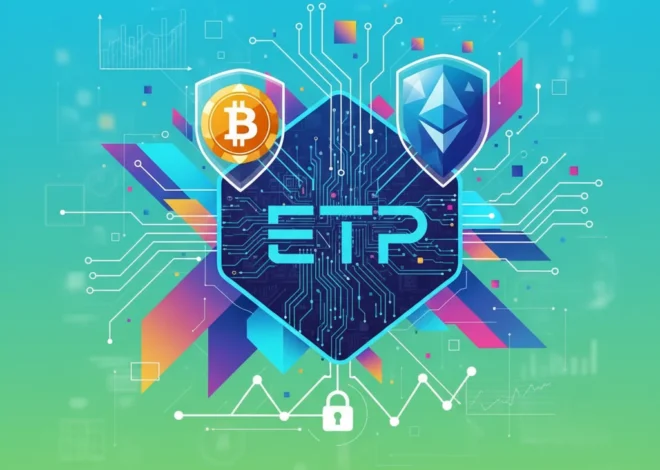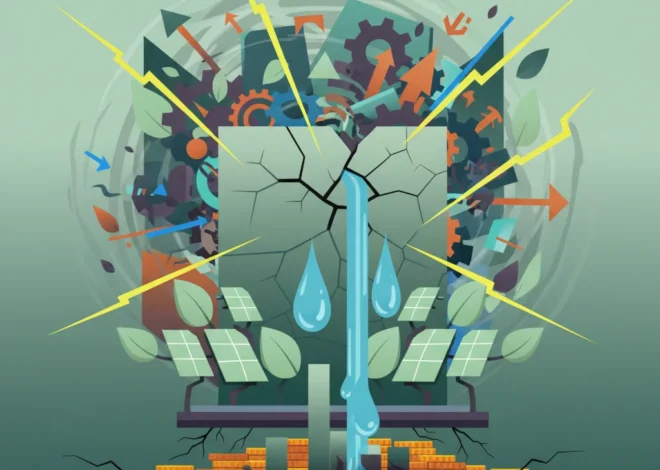
A Star in the Sky: How the Virgin Media O2-Starlink Deal Will Reshape the UK’s Economy and Investment Landscape
In an era defined by digital immediacy, the existence of mobile signal “not-spots” feels like an anachronism—a frustrating relic of a less connected time. For millions in the UK, particularly in rural and remote areas, this is a daily reality that hampers business, isolates communities, and creates a stark digital divide. However, a landmark announcement is set to beam a solution down from the heavens. Virgin Media O2 has officially partnered with Elon Musk’s SpaceX, leveraging its Starlink satellite constellation to provide mobile connectivity across the entire UK landmass, effectively promising to eradicate signal blackspots by 2025.
This collaboration, detailed in a report by the BBC, is far more than a simple technological upgrade. It represents a pivotal moment for the UK’s digital infrastructure, carrying profound implications for the national economy, the future of financial technology, and the landscape of investing. By bridging the final frontier of connectivity, this deal unlocks a cascade of economic opportunities and presents a new paradigm for investors and business leaders to consider.
The Persistent Problem of the Digital Divide
For years, the UK has grappled with incomplete mobile coverage. While urban centers boast robust 5G networks, vast swathes of the countryside remain underserved. According to a 2023 report from UK communications regulator Ofcom, while 92% of the UK landmass has good 4G coverage from at least one operator, only 53% has coverage from all four major providers (source). These gaps, or “not-spots,” are not just an inconvenience; they are significant economic barriers.
They stifle rural entrepreneurship, complicate logistics for agriculture and tourism, and create safety concerns in emergencies. From a finance perspective, this lack of reliable connectivity prevents the full adoption of digital banking and mobile payment systems, leaving segments of the population reliant on outdated financial infrastructure. This digital divide has tangible costs, impacting everything from property values to the viability of remote work.
The Third Way for Pensions: Are Collective Schemes the Future of UK Retirement?
Beaming Down a Solution: How Direct-to-Cell Technology Works
The Virgin Media O2 and Starlink partnership isn’t about bulky satellite dishes or specialized phones. It leverages a cutting-edge technology known as “Direct to Cell” (or Direct to Device). Starlink’s constellation of Low Earth Orbit (LEO) satellites, which orbit just 550 kilometers above Earth, will act as “cell towers in the sky.”
Here’s a breakdown of how this futuristic solution compares to traditional connectivity:
| Feature | Traditional Terrestrial Network (4G/5G) | LEO Satellite Network (Starlink Direct to Cell) |
|---|---|---|
| Infrastructure | Physical cell towers on the ground | Constellation of satellites in Low Earth Orbit |
| Coverage | Limited by geography and tower placement; “not-spots” are common | Potentially global and ubiquitous, covering land, sea, and air |
| Initial Use Case | High-speed data, voice, and video in populated areas | SMS, then voice and basic data in areas with no terrestrial signal |
| Latency | Very low (typically 10-50ms) | Low for a satellite (20-100ms), but higher than terrestrial |
| Hardware Requirement | Standard smartphone | Standard smartphone (no special equipment needed) |
Initially, the service will support SMS text messaging, with voice and data capabilities to follow. The key innovation is that this will work with existing 4G and 5G smartphones without any modifications. The phone’s existing radio will be able to communicate directly with the satellite when it’s out of range of a terrestrial tower, ensuring a baseline of connectivity anywhere in the country.
The Economic Shockwave: From Rural Revitalization to Fintech Expansion
The promise of 100% UK mobile coverage is an economic catalyst in waiting. The implications extend far beyond sending a text from a remote hiking trail. This is about unlocking latent economic potential and creating a more equitable digital economy.
1. A New Dawn for the Rural Economy
Universal connectivity will supercharge rural businesses. Farmers can deploy IoT (Internet of Things) sensors for precision agriculture, tourism operators can offer seamless booking and digital services in remote locations, and artisans can run e-commerce businesses from anywhere. This decentralization of economic opportunity could slow rural depopulation and create new hubs of innovation outside of major cities, fundamentally altering regional economics.
2. The Final Frontier for Financial Technology (Fintech)
The fintech revolution has been built on the assumption of constant connectivity. Mobile banking, contactless payments, and online trading platforms are useless without a signal. By closing the coverage gap, this initiative ensures that every individual and business in the UK can participate in the modern digital financial ecosystem. This opens up new markets for financial service providers and empowers consumers with greater choice and control over their finance, regardless of their location.
3. A Re-evaluation for the Stock Market and Investors
This partnership sends a clear signal to the stock market. It positions Virgin Media O2 (owned by Liberty Global and Telefónica) as an innovator with a powerful competitive advantage. For investors, this creates several new avenues of exploration:
| Investment Area | Key Players | Investment Thesis |
|---|---|---|
| Satellite Operators | SpaceX (Private), Iridium, Globalstar, AST SpaceMobile (Public) | Direct investment in the core infrastructure providers of the new connectivity layer. High growth potential but also high risk. |
| Telecom Incumbents | Virgin Media O2, Vodafone, BT (EE), AT&T, T-Mobile | Assessing which legacy players are adapting quickest to the hybrid network model. Look for strategic partnerships. |
| Component Manufacturers | Qualcomm, MediaTek, Skyworks Solutions | The “picks and shovels” play. These companies make the chips and radios that enable both satellite and terrestrial communication. |
| Downstream Applications | IoT companies, AgTech, Logistics, Fintech Startups | Investing in the businesses that will be built on top of this new ubiquitous connectivity. |
This technological shift could even have long-term implications for fringe but fascinating areas like blockchain. Decentralized applications and currencies, which rely on a distributed and always-on network of nodes, can only achieve true global scale when connectivity is a given, not a variable. Universal coverage is a foundational step toward that future.
Challenges on the Horizon: Cost, Capacity, and Competition
While the potential is immense, the path to a fully connected UK is not without its challenges. Several key questions remain:
- Cost to the Consumer: Will this service be included in standard mobile plans, or will it be a premium add-on? Pricing will be a critical factor in adoption.
- Network Capacity: While excellent for SMS and basic services, the bandwidth available from “Direct to Cell” technology is currently limited. It won’t replace a 5G tower in a city; it’s a safety net, not a superhighway. Managing user expectations will be crucial.
- Regulatory Hurdles: Securing the necessary spectrum rights and regulatory approvals for a service that crosses terrestrial and space domains can be complex.
- The Competitive Response: As noted, competitors will not stand still. We are likely entering a new arms race for satellite partnerships. T-Mobile in the US has a similar deal with Starlink (source), and AST SpaceMobile recently achieved a 5G connection from space to a standard smartphone (source), signaling a crowded and competitive field.
From Sand to Gold: The Agri-Tech Revolution and the New Investment Frontier
Conclusion: A New Trajectory for a Connected Kingdom
The partnership between Virgin Media O2 and Starlink is a watershed moment. It is a testament to how space technology is no longer a distant, abstract concept but a tangible solution to real-world economic and social problems. By aiming to eliminate mobile not-spots, this initiative does more than just improve convenience; it lays the groundwork for a more inclusive, resilient, and dynamic national economy.
For business leaders, this is a call to rethink geographic limitations. For finance professionals, it opens up the entire country as a viable market for digital services. And for those focused on investing, it signals a paradigm shift in telecommunications—one where the ultimate competitive advantage is not just on the ground, but in the stars above. The UK’s journey to 100% connectivity has officially begun its countdown.


